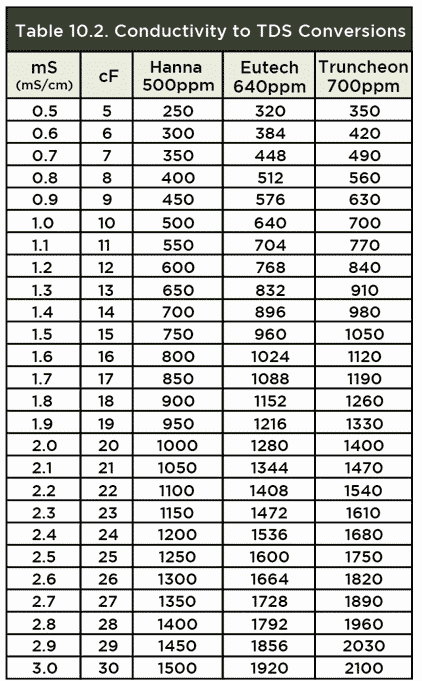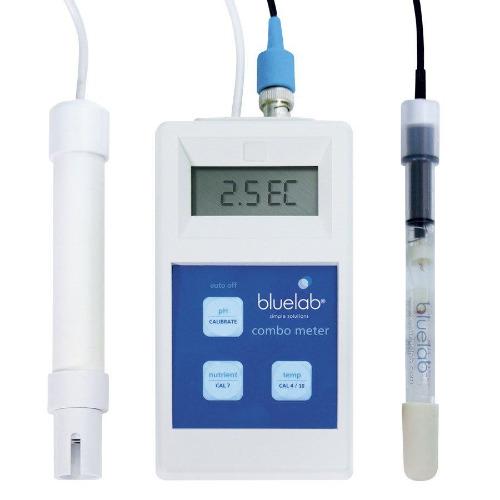To kick off our new blog series we want to start with the basics. This means starting at the beginning for anyone who is new to hydroponics and gardening generally. There are a lot of terms and variables to be aware of in hydroponics, especially in CEA (controlled environment agriculture), but don’t get overwhelmed… The different pieces of the puzzle fit together systematically and everything tends to be clarified as the whole picture comes into view.
Both EC (electrical conductivity) and PPM (parts per million) can be used to measure the amount of solutes in a given mix but a few things need to be taken into consideration…
EC passes an electrical current through solution and measures how easily it was able to get from point A to point B; it is most often measured in mS/cm (millisiemens/cm; also seen as microsiemens/cm [uS/cm] 1000 uS = 1mS). The more ions present in solution (the more dissolved salts) the more available electrons there are to transfer charge from one pole to the other, making the solution more electrically conductive (ie, higher EC).
By the same token higher PPM will result in a higher EC. Both are a measure of how many dissolved salts are present in solution (if you’ve mixed your fertilizer properly, using clean unadulterated water) and therefore the nutrient levels available to your crops. It’s useful to think of PPM as a ratio (which it is) much like percentage, except that in this case we’re working with parts out of a million rather than a hundred; it also makes these numbers much more manageable when we notice that 1mg of a given element dissolved in 1L of water results in a 1PPM dilution ratio. This is because there are 1000mg in 1g and 1000g in 1L (1Kg) of water (1000×1000=1,000,000); how beautiful the metric system is!
EC readings are always derived using the above method. True PPM readings are done by sending a sample off to a lab that will dry and weigh each component element and return a guaranteed chemical analysis that looks something like this:
This method is by far the most precise because it gives us not only the amount of total dissolved salts but also the specific ratio of each one present in solution. The drawback to this approach is the time and cost involved; it will often take several weeks to receive a guaranteed analysis back from the lab making it relatively useless when you need to measure/dose your reservoir on a daily basis.
The other, and far more common, method of getting a PPM value is by converting it from an instantaneous EC reading. The problem here is that there are multiple conversion factors used by various manufacturing companies that give wildly different PPM readings from the same solution. The issue is that there is no general consensus on which conversion factor best reflects the actual properties of a given hydroponic nutrient regime. Some say NaCl (sodium chloride) while others claim the 442 conversion factor is more accurate.
The NaCl conversion factor is 500xEC in mS whereas the 442 conversion is 700xEC in mS. Check out the chart below to see just how far off your reading could be if you’re not using the appropriate conversion factor:
The simplest solution (haha) is to use EC. That way there is no conversion necessary and you can rest confidently knowing that your nutrient levels are where they should be.
Now, both EC and PPM will give you a reading of how much is in your solution but not what that something is. This is why EC levels are only ever part of the equation regarding nutrients in hydroponics. The other part is the ratio of the various macro- and micronutrients in solution. For that we need to look at your fertilizer, whether it be a premixed liquid nutrient or a bag of dry salts.

We’re going to look at nutrient composition in a separate post as well as different options when it comes to fertilizer regimes. For now, suffice it to say that EC/PPM deal directly with the quantity of nutrients in solution. Quality is the other part of this equation that we’ll get to in due course.






